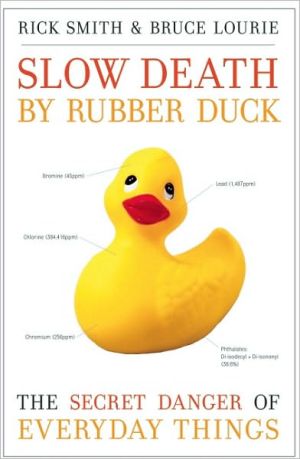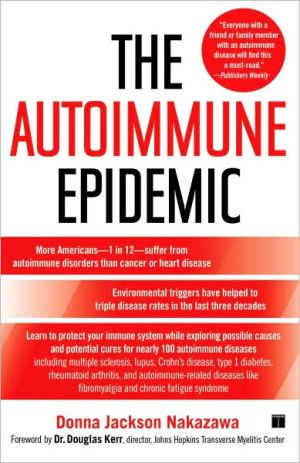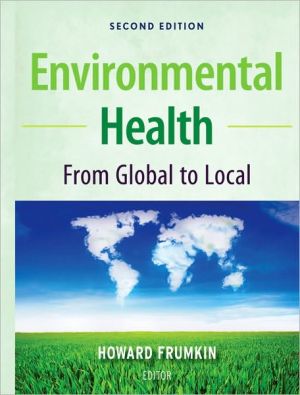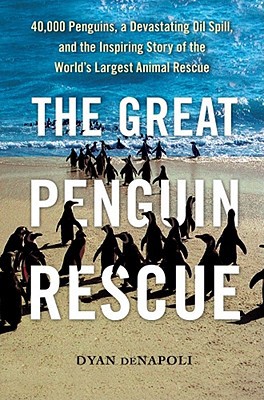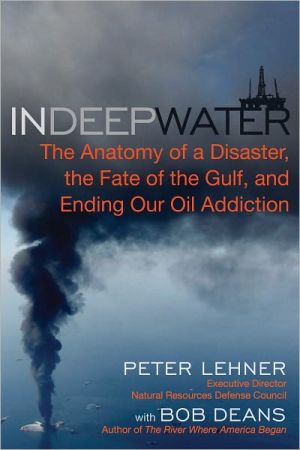Slow Death by Rubber Duck: The Secret Danger of Everyday Things
Studies have shown that significant levels of toxic substances can leach out of commonplace items in our homes and workplaces. How do these toxins make their way inside us and what impact do they have on our health? And more importantly, what can we do about them? Rick Smith and Bruce Lourie tackle these questions head on by experimenting upon themselves. Over a four-day period, our intrepid (and perhaps foolhardy) authors ingest and inhale a host of things that surround us all every day, all...
Search in google:
Pollution is not only an abstract, distant problem seen in belching smokestacks and contaminated waterways; it’s also personal. Some of the most dangerous pollutants come from commonplace items in our homes and workplaces—shampoos and toothpastes, carpets and children’s toys. To prove this point, leading environmentalists Rick Smith and Bruce Lourie conducted their own research by ingesting and inhaling a host of things that are part of our everyday lives. Using their own bodies as the reference point to tell the story of pollution in our modern world, they expose the miscreant corporate giants who manufacture the toxins, the weak-kneed government officials who let it happen, and the effects on people and families across the globe. This book—the testimony of their experience—exposes the extent to which we are poisoned every day of our lives. The Washington Post - Lisa Bonos This story of everyday pollution features not only the authors' self-experiments and struggles to create cleaner homes for their families but also their parsing of scientific studies of these chemicals and links to such problems as birth defects, childhood autism, attention-deficit disorder, hormonal imbalances and rising cancer rates. But it's not all doom and gloom…Slow Death by Rubber Duck is hard-hitting in a way that turns your stomach and yet also instills hope for a future in which consumers make safer, more informed choices and push their governments to impose tougher regulations on the chemicals all around us.
Foreword Theo Colborn viii\ Preface xi\ Introduction 1\ 1 Pollution Then And Now 9\ 2 Rubber Duck Wars 33\ 3 The World's Slipperiest Substance 69\ 4 The New PCBs 96\ 5 Quicksilver, Slow Death 131\ 6 Germophobia 159\ 7 Risky Business: 2, 4-D And The Sound Of Science 187\ 8 Mothers Know Best 216\ 9 Detox 254\ Resource Guide/Further Reading 276\ Notes 281\ Credits 310\ Index 314\ Acknowledgments 327
\ Lisa BonosThis story of everyday pollution features not only the authors' self-experiments and struggles to create cleaner homes for their families but also their parsing of scientific studies of these chemicals and links to such problems as birth defects, childhood autism, attention-deficit disorder, hormonal imbalances and rising cancer rates. But it's not all doom and gloom…Slow Death by Rubber Duck is hard-hitting in a way that turns your stomach and yet also instills hope for a future in which consumers make safer, more informed choices and push their governments to impose tougher regulations on the chemicals all around us.\ —The Washington Post\ \ \ \ \ Publishers WeeklyStarred Review. \ Undertaking a cheeky experiment in self-contamination, professional Canadian environmentalists Smith and Lourie expose themselves to hazardous everyday substances, then measure the consequences. Inspired by data from the Environmental Working Group that shows Americans carry significant amounts of toxic industrial chemicals in our bodies (and published research tying those toxins to obesity, ADHD, autism, Alzheimer's, heart disease, and diabetes), Smith and Lowrie attempt to increase their personal "body load" of seven particularly worrisome toxins-phthalates, Teflon, ubiquitous anti-bacterial triclosan, brominated fire retardants, Bisphenol A, mercury, and hormone-based pesticide 2.4-D-through everyday North American activity: eating, drinking, sleeping, cleaning, watching TV, etc. Smith and Lowrie describe in detail the reasons behind and parameters of their self-experiment, including the hows and whys of blood and urine testing, and the specific products (Coke, Stainmaster carpet cleaner, Rubbermaid microwavable containers) purchased to increase their exposures. They also discuss their attempts to flush and avoid toxins before the experiment (Smith tries eating only food that hasn't come into contact with plastics, which proves impossible). Throughout, the duo weave scientific data and recent political history into an amusing but unnerving narrative, refusing to sugarcoat any of the data (though protection is possible, exposure is inevitable) while maintaining a welcome sense of humor.\ Copyright © Reed Business Information, a division of Reed Elsevier Inc. All rights reserved.\ \ \
